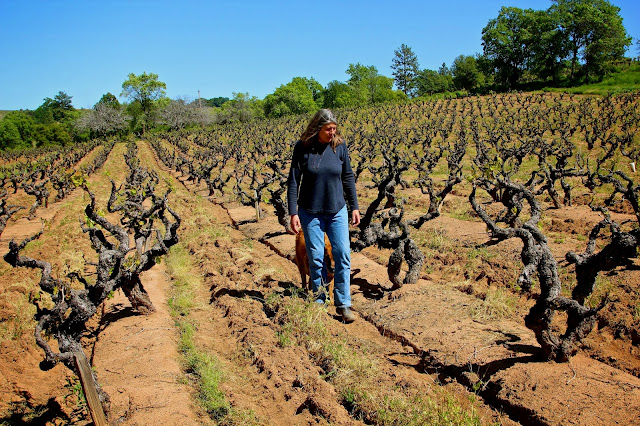September Surprise - Shiny New California Gems

Just back from a wham-bam four day trip through the North Coast (Sept. 2-6), and uncovered some brand new gems -- always the best part of these visits! No necessarily in order of my preference, since each of the following absolutely bowled me over:
2004 Lang & Reed, Napa Valley Right Bank
I haven't been this excited about a new release since Van Morrison's Stoned Me (many moondances ago, as it were). If you've loved winemaker/proprietor John Skupny's Premier Étage Cabernet Francs -- and yes, the scrumptuous qualities of Saint-Émilions like La Mondotte and Canon-la-Gaffeliere -- you'll flip over this, too. Napa Valley sourced Cabernet Franc (53%), Merlot (30%), Petit Verdot (9%), Cabernet Sauvignon (8%)... yada yada... the important thing is that Skupny has crafted a blend that is so tender, so dense yet soft, succulent and unerringly balanced, all you can think is wow... this is what Bordeaux style blending is all about. Aromas are of concentrated black cherry and blackcurrants, with minty/herby nuances at the center. Talk about tannin management -- Skupny has become a master of perfectly round and seamless tannin molecule, with lots of it (nothing weak or bony about this wine). In the end, just delicious, and undoubtedly as food versatile as any of these types of wines can be. Only prob: only 170 cases made (get 'em while they're hot!)
2005 Neyers, Conn Valley ÂME Cabernet Sauvignon
Everyone knows Neyers makes great wines -- impeccably crisp, minerally, detailed Chardonnays, powerfully plump Zinfandels, endlessly deep Syrahs, and the luscious possible Merlot. But now you can add 100% Cabernet Sauvignon to that list: the ÂME, just unbelievable. Not just big, thick and concentrated like you would expect out of Cabernet Sauvignon from hands of masters (for the record, Tadeo Borchardt has recently taken over the reins as winemaker from Ehren Jordan, who remains a consulting partner), but also seamlessly smooth and textured. Liquid velvet, in the manner of speaking. 400 cases were coaxed out of Neyers' home vineyard (less than a ton per acre) planted in 1996 -- decomposed basalt, granite and gravel on a harrowing 40 degree slope, 800 foot elevation, close spacing, low unilateral trellising, organically farmed, and then crafted in the Neyers style (indigenous yeast, 30 day maceration, zero filtering...). Âme means "soul" -- and Bruce Neyers has truly captured the soul of the Cabernet Sauvignon grape -- although the name is also an acronym for Bruce's three kids. Whatever the case... bravo, Bruce!
2005 Cedarville, El Dorado Syrah
It's been about ten years now since Cedarville burst upon the scene with their high elevation (2500 feet), mountain grown Syrahs and Zinfandels. The good news is that they're better than ever, which is saying a lot. If you're looking for a California grown Syrah that truly captures the perfume, meat and zest of, say, Northern Rhone reds -- that is, without the coarse, raisiny qualities typical of most California Syrahs -- then the crumbly granite, sandy soils in El Dorado's Fair Play sub-AVA is the place to find it. The Cedarville's nose is of classic Syrah spice -- peppery violets, with roasted coffee, grilling meat and burnt leaf nuances -- and on the palate, the feel is big and velvety, the dusty, iron fisted quality of the Fair Play terroir mingling with sweet sensations in the finish. Like Neyers' new Cabernet, soul-satisfying.
2005 C.G. de Arie, Southern Exposure Shenandoah Valley Zinfandel
No visit to California is complete without the discovery of another starry Zinfandel. I've been skeptical of Amador County Zinfandels in general the past ten, fifteen years, and so it's gratifying to find one that retains all the luscious, cinnamon-and-clove spice for which the foothills originally made its reputation, but without the rough, varnishy, over-oaked flaws that are all too common in wines from that region. The operative term in the C.G. de Arie is sumptuous (as opposed to "big" or "bruising"); sweet berry jam and clove and peppercorn-studded orange peel mixed in with the varietal spice, and on the palate the wine is dense and full, yet with more emphasis on the round, lush qualities of the grape. This is good, smart winemaking because nothing is done to get in the way of the pure taste of the grape, which is plenty good without the excess bells and whistles.





Comments